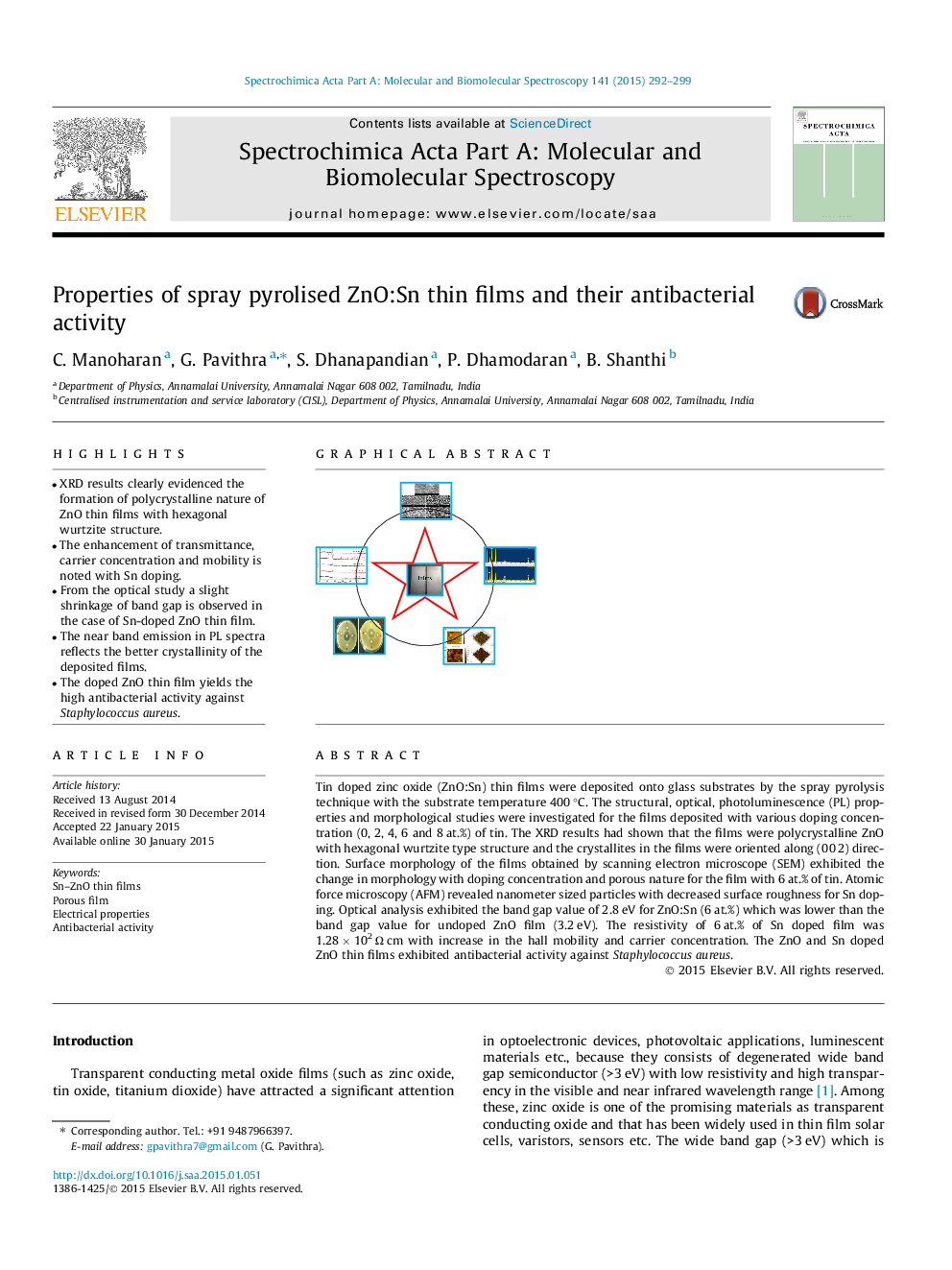| Article ID | Journal | Published Year | Pages | File Type |
|---|---|---|---|---|
| 1232417 | Spectrochimica Acta Part A: Molecular and Biomolecular Spectroscopy | 2015 | 8 Pages |
•XRD results clearly evidenced the formation of polycrystalline nature of ZnO thin films with hexagonal wurtzite structure.•The enhancement of transmittance, carrier concentration and mobility is noted with Sn doping.•From the optical study a slight shrinkage of band gap is observed in the case of Sn-doped ZnO thin film.•The near band emission in PL spectra reflects the better crystallinity of the deposited films.•The doped ZnO thin film yields the high antibacterial activity against Staphylococcus aureus.
Tin doped zinc oxide (ZnO:Sn) thin films were deposited onto glass substrates by the spray pyrolysis technique with the substrate temperature 400 °C. The structural, optical, photoluminescence (PL) properties and morphological studies were investigated for the films deposited with various doping concentration (0, 2, 4, 6 and 8 at.%) of tin. The XRD results had shown that the films were polycrystalline ZnO with hexagonal wurtzite type structure and the crystallites in the films were oriented along (0 0 2) direction. Surface morphology of the films obtained by scanning electron microscope (SEM) exhibited the change in morphology with doping concentration and porous nature for the film with 6 at.% of tin. Atomic force microscopy (AFM) revealed nanometer sized particles with decreased surface roughness for Sn doping. Optical analysis exhibited the band gap value of 2.8 eV for ZnO:Sn (6 at.%) which was lower than the band gap value for undoped ZnO film (3.2 eV). The resistivity of 6 at.% of Sn doped film was 1.28 × 102 Ω cm with increase in the hall mobility and carrier concentration. The ZnO and Sn doped ZnO thin films exhibited antibacterial activity against Staphylococcus aureus.
Graphical abstractFigure optionsDownload full-size imageDownload as PowerPoint slide
